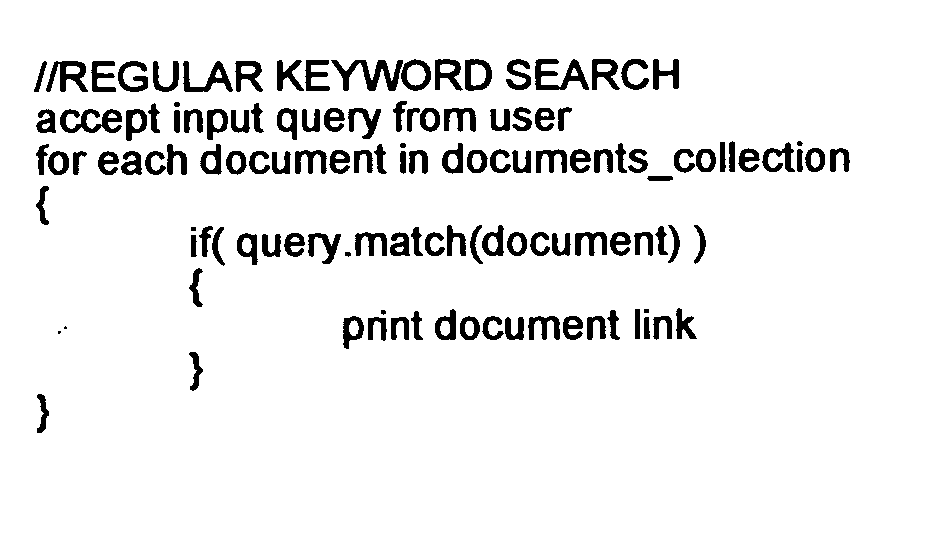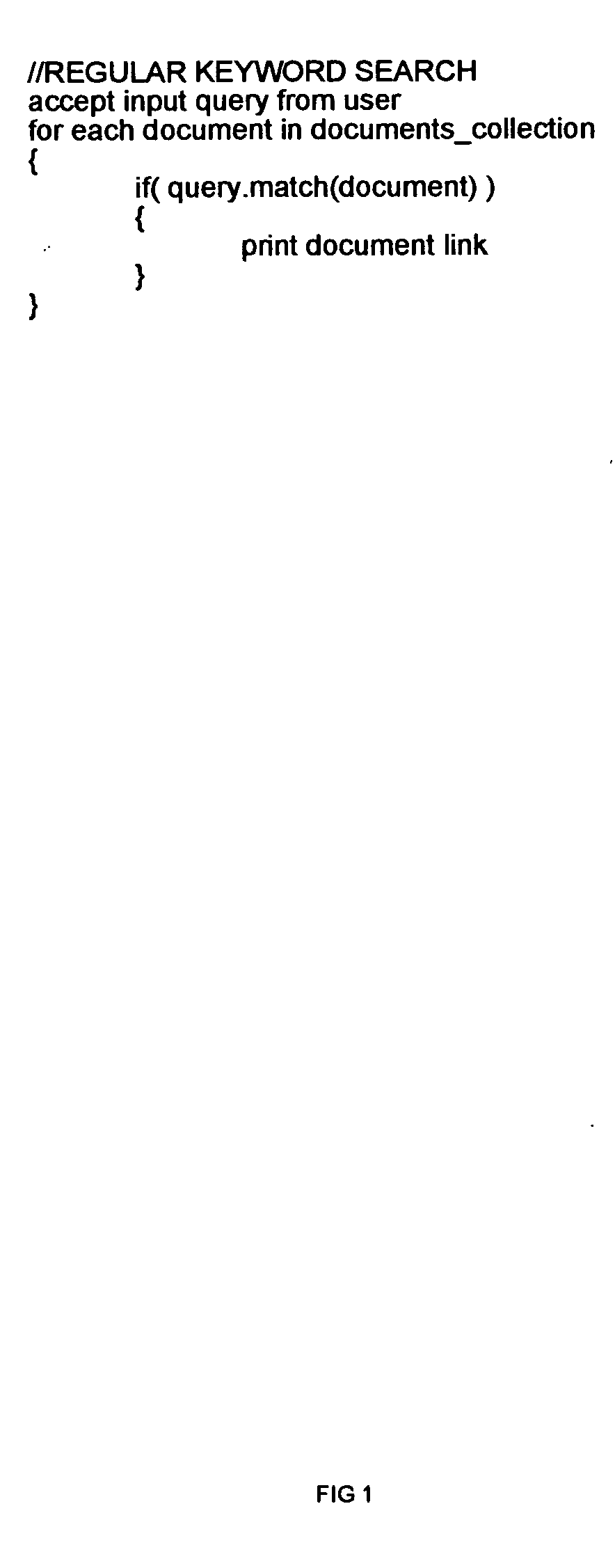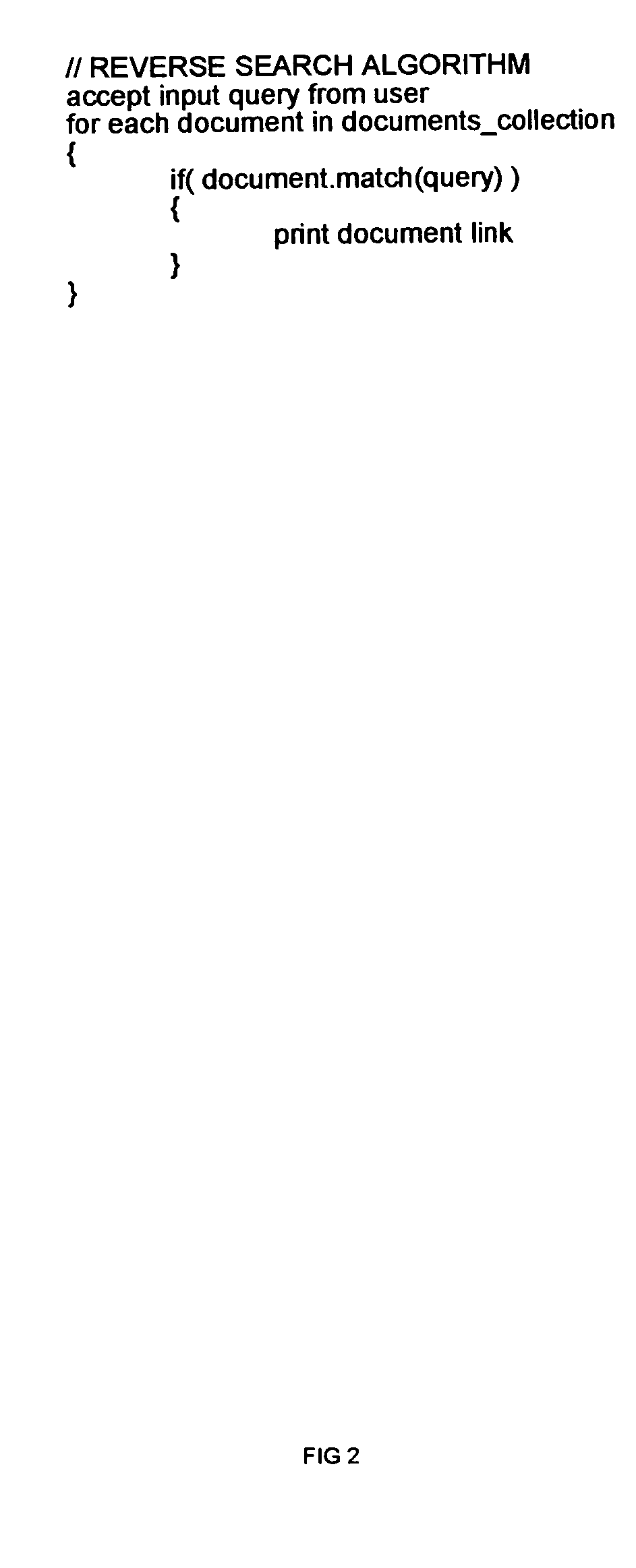Learning search algorithm for indexing the web that converges to near perfect results for search queries
a search algorithm and web technology, applied in the field of retrieving documents, can solve the problems of low scalable algorithms, low research on methods of making these algorithms more scalable, and high cost of generating accurate and reliable domain knowledg
- Summary
- Abstract
- Description
- Claims
- Application Information
AI Technical Summary
Benefits of technology
Problems solved by technology
Method used
Image
Examples
embodiment
Preferred Embodiment
[0167] An embodiment of this invention is described in FIG. 15. A query is accepted from a user in step 1510. To find documents that are to be shown in response to the query, we collect matching rules from the authors of these documents as shown in step 1520 and associate these rules with their corresponding documents in step 1530. In step 1540 we identify the document whose match-functions match with the input query and show the identified documents in a results page. In step 1550 we solicit feedback from search-users about the results we have computed. This feedback helps us measure the trustworthiness of the matching rules used to compute each item in the results page. In step 1560, we keep a cumulative record of the trustworthiness of each match-function and reward trustworthy match-functions with better placement on the results page during subsequent searches.
[0168] A computerized implementation of this method is shown in FIG. 16. The matching-rules collect...
PUM
 Login to View More
Login to View More Abstract
Description
Claims
Application Information
 Login to View More
Login to View More - R&D
- Intellectual Property
- Life Sciences
- Materials
- Tech Scout
- Unparalleled Data Quality
- Higher Quality Content
- 60% Fewer Hallucinations
Browse by: Latest US Patents, China's latest patents, Technical Efficacy Thesaurus, Application Domain, Technology Topic, Popular Technical Reports.
© 2025 PatSnap. All rights reserved.Legal|Privacy policy|Modern Slavery Act Transparency Statement|Sitemap|About US| Contact US: help@patsnap.com



